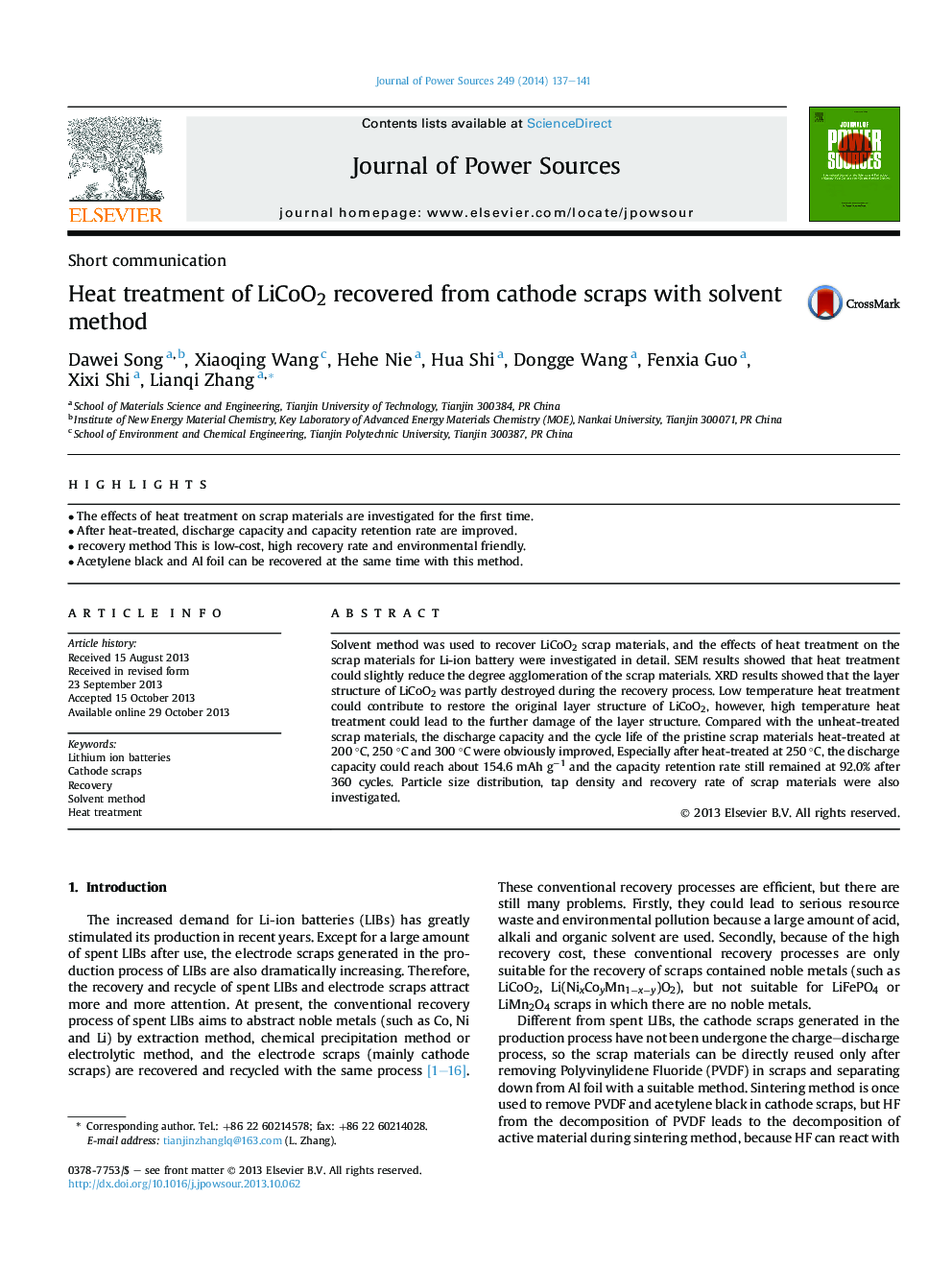| Article ID | Journal | Published Year | Pages | File Type |
|---|---|---|---|---|
| 7738352 | Journal of Power Sources | 2014 | 5 Pages |
Abstract
Solvent method was used to recover LiCoO2 scrap materials, and the effects of heat treatment on the scrap materials for Li-ion battery were investigated in detail. SEM results showed that heat treatment could slightly reduce the degree agglomeration of the scrap materials. XRD results showed that the layer structure of LiCoO2 was partly destroyed during the recovery process. Low temperature heat treatment could contribute to restore the original layer structure of LiCoO2, however, high temperature heat treatment could lead to the further damage of the layer structure. Compared with the unheat-treated scrap materials, the discharge capacity and the cycle life of the pristine scrap materials heat-treated at 200 °C, 250 °C and 300 °C were obviously improved, Especially after heat-treated at 250 °C, the discharge capacity could reach about 154.6 mAh gâ1 and the capacity retention rate still remained at 92.0% after 360 cycles. Particle size distribution, tap density and recovery rate of scrap materials were also investigated.
Related Topics
Physical Sciences and Engineering
Chemistry
Electrochemistry
Authors
Dawei Song, Xiaoqing Wang, Hehe Nie, Hua Shi, Dongge Wang, Fenxia Guo, Xixi Shi, Lianqi Zhang,
